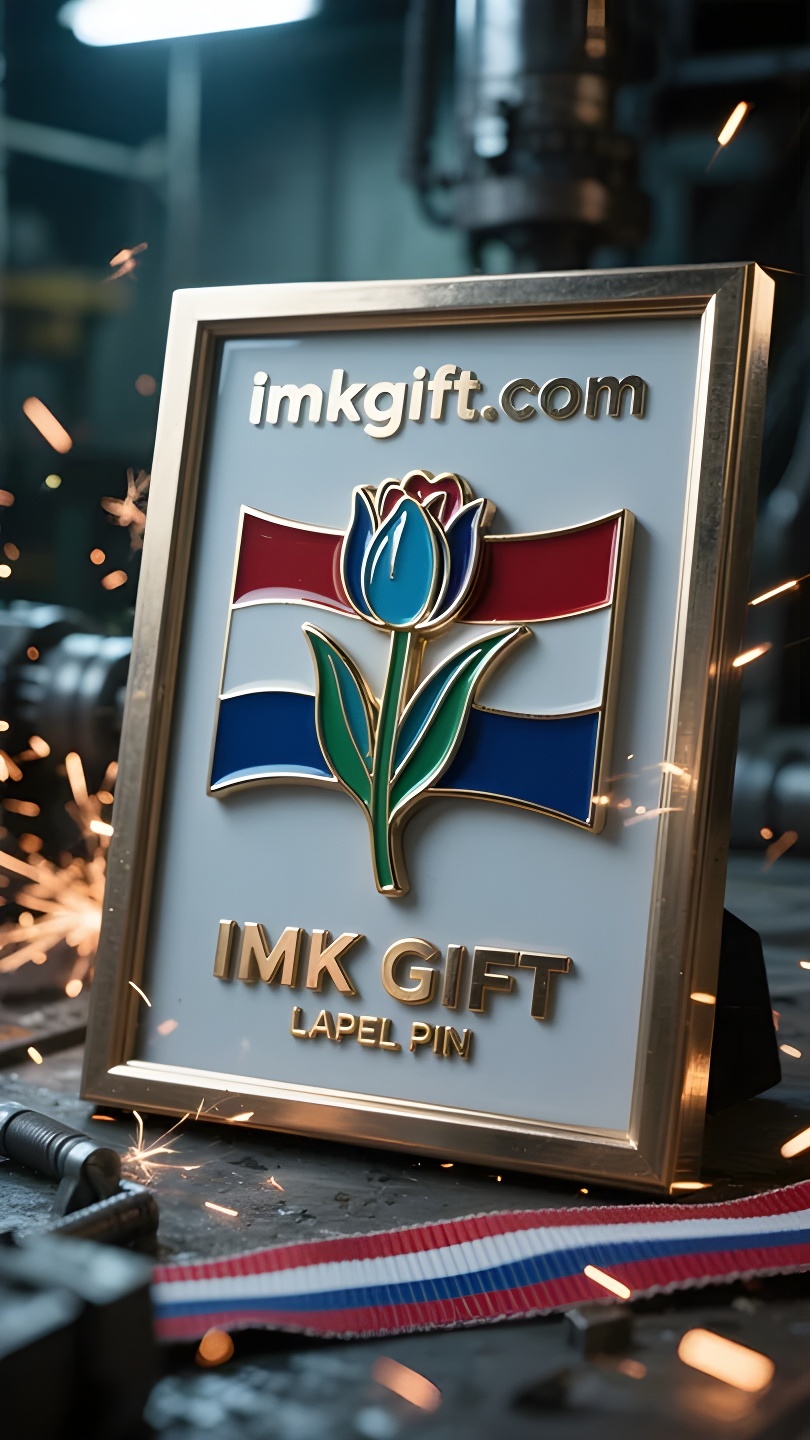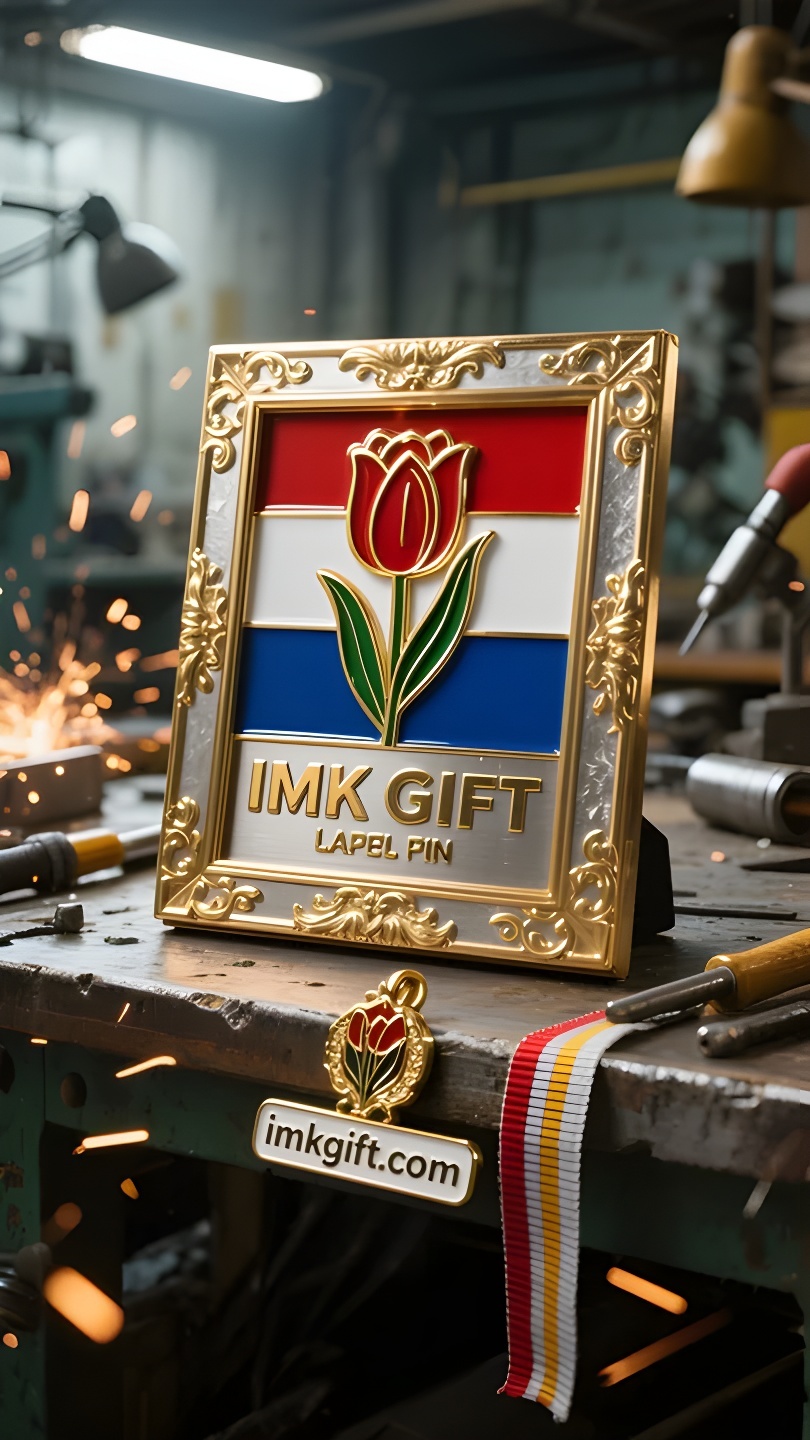in998-Driekleurig-geloof-in-het-tulpenframe
▼
In april is de oranje vloedgolf van Koningsdag in Nederland nog niet verdwenen en de tulpen in Park Keukenhof hebben zich tot een zee uitgestrekt. Aan de oevers van de Amsterdamse gracht staat een reusachtig houten frame, ingelegd met tulpenblaadjes, stil. Het omlijst de rood-wit-blauwe nationale vlag in de schaduw van de bloeiende bloemen en vormt de meest poëtische metafoor voor de Nederlandse geest. De pen-en-gatverbinding van dit frame is net als de Nederlandse wijsheid van waterbeheer – elke houten lat bijt in een precieze hoek, als een dam die land wint op de zee, waardoor vitaliteit ontstaat in beperkingen. Wanneer bezoekers door het bloemenframe naar de nationale vlag kijken, vormen de driekleurige strepen en de tulpenstelen een prachtige resonantie: de rode tulpen vertellen over de 400 jaar oude vurige vindingrijkheid van de Delfts Blauwe pottenbakkers, de witte bloemblaadjes condenseren het pure geloof van de bouwers van de Zuiderzeedam, en de blauwe iris (de nationale bloem van Nederland) zet de diepe blik in Vermeers schilderijen voort. Het frame is oorspronkelijk een manier om het moment vast te leggen, maar de Nederlanders hebben er een vloeiende filosofie aan gegeven. De jaarlijks veranderende bloemenpatronen maken het ingelijste landschap altijd fris; de plooien van de nationale vlag die zich in de wind uitstrekt, verzachten de strakke grens tot kabbelende golven. Deze wijsheid van “inlijsten, maar niet opsluiten” is precies hoe dit laagland kan overleven in de oceaan: dammen gebruiken om overstromingen te beperken, maar windmolens om vrijheid te verwerven; regels gebruiken om orde te scheppen, maar tolerantie gebruiken om innovatie te kweken. Wanneer de aprilzon door het houten bloemenframe dringt, lijken de ruitvormige vlekken op de nationale vlag op tulpen die nooit verwelken. Ze herinneren iedereen die stilstaat eraan: de echte grens is nooit een kooi die de groei beperkt, maar een vruchtbare bodem voor leven om te bloeien.
In April in the Netherlands, the orange tide of King’s Day has not yet faded, and the tulips in Keukenhof Park have stretched into a sea. On the banks of the Amsterdam canal, a giant wooden frame inlaid with tulip petals stands quietly, framing the red, white and blue national flag in the shadow of the blooming flowers, forming the most poetic metaphor of the Dutch spirit. The mortise and tenon structure of this frame is just like the Dutch wisdom of water management – each wooden strip bites at a precise angle, like a dam for reclaiming land from the sea, creating vitality in restrictions. When visitors look up at the national flag through the flower frame, the three-color stripes and the tulip stems form a wonderful resonance: the red tulips tell the 400-year-old fiery ingenuity of the Delft Blue potters, the white petals condense the pure faith of the builders of the Zuiderzee Dam, and the blue iris (the national flower of the Netherlands) continues the deep watch in Vermeer’s paintings. The frame is originally a container for freezing the moment, but the Dutch have given it a flowing philosophy. The floral patterns that change every year make the framed scenery always fresh; the folds of the national flag stretching in the wind soften the rigid border into rippling waves. This wisdom of “framing but not imprisoning” is exactly the way for this lowland nation to survive in the face of the ocean – using dams to restrain floods, but using windmills to gain freedom; using rules to build order, but using tolerance to breed innovation. When the April sun penetrates the wooden flower frame, the diamond-shaped spots cast on the national flag are like tulips that never fade. They remind everyone who stops: the real border is never a cage that restricts growth, but a fertile soil for life to bloom.
四月的荷兰,国王节橙潮未褪,库肯霍夫公园的郁金香已绵延成海。在阿姆斯特丹运河畔,一座以郁金香花瓣拼嵌的巨型木质相框静静矗立,将红白蓝三色国旗框入盛放的花影中,构成荷兰精神最诗意的隐喻。
这座相框的榫卯结构恰似荷兰治水智慧——每根木条都以精确角度咬合,如同围海造田的堤坝,在限制中创造生机。当游人透过花框仰望国旗时,三色条纹与郁金香茎秆形成奇妙共振:红色郁金香诉说代尔夫特蓝陶匠四百年的炽热匠心,白色花瓣凝结须德海大坝建设者的纯粹信念,蓝色鸢尾(荷兰国花)则延续着维米尔画作里的深邃守望。
相框本是用以定格瞬间的容器,荷兰人却赋予它流动的哲思。每年更换的花卉图案,让被框定的风景永远鲜活;国旗在风中舒展的褶皱,又将刻板的边界柔化成荡漾的波纹。这种“框而不锢”的智慧,恰是这个低地民族面对海洋的生存之道——用堤坝约束洪水,却用风车获取自由;用规则构建秩序,却以包容孕育创新。
当四月的阳光穿透木质花框,投在国旗上的菱形光斑,恰似一朵朵永不凋零的郁金香。它们提醒着每个驻足者:真正的边界,从来不是限制生长的牢笼,而是让生命绽放的丰沃土壤。
▼
Contact Us
📞 Tel: +0086-760-85286839
📧 Email: sales3@imkgift.com








